It’s been just over a month since Adam and I moved to Copenhagen. While we’re slowly adjusting to a new way of life, it has been hard not to reminisce on all that we have left behind. The comfort of what is known: an air-conditioned apartment, a comfortable bed, local grocery stores, our friends, the coffee shop downstairs, a consistent routine, and food we can’t just make at home. Despite this, we’re slowly learning to grow comfortable in the unfamiliar - to sit in rooms with voices speaking a foreign language, jumping on our bikes when we have somewhere to go, navigating the understocked aisles of one of Denmark’s many discount grocery stores, adding strangers on Instagram, and eating our weekly quota of buns with butter and cheese.
~
During our first week, we took a day trip to the countryside and embarked on a four-and-a-half-hour hike around the circumference of Furesø Lake, located in Farum, Denmark—just a 30-minute train ride from the city.
We bought our first and only hiking backpack the night before, packed it full with towels, swimwear, apples, granola bars, six water bottles, and leftover pizza wrapped in aluminum foil, and went on our way.
Two hours into the hike, we found a spot under the shade of several large trees to pause and for a chance to refuel. The temperature had grown warm as the mid-afternoon sun beat down on our backs. We passed children swimming and adults with their feet in the water, ice cream cones in hand and wine bottles corked, we stared longingly at a sight reserved only for the finish - withholding pleasure for the sake of reward.
Nearly an hour and a half later, we found ourselves lost. The consequence of a map in my hands, destined never to be looked at, let alone used to navigate one’s path.
We called a taxi back to the train station, an unusual sight for the remote town and its inhabitants. Our foreign-ness sticking out like a sore thumb.
As we approached the city, we felt comfort in knowing our surroundings, eating fried chicken sandwiches and drinking sparkly orange wine while sitting on the steps of an old cemetery on Nørrebrogade.
~
The first time we walked through the Assistens Cemetery, it was by mistake. We were looking for a shortcut on our way home when we realized that the luscious green park we had cut through was actually a burial site, home to thousands of etched gravestones, including some of Denmark’s most notable figures of the 19th century.
The poet Hans Christian Andersen, physicist Niels Bohr, and philosopher Søren Kierkegaard, among the most celebrated.
Initially a burial site for the poor, the cemetery gained popularity among the city’s elite, middle- and working classes, after Johan Samuel Augustin, a renowned astronomic writer and member of the Royal Danish Academy of Sciences, requested to be buried there in 1785. Subsequently, the cemetery continued to grow, up to Jagtvej along Nørrebrogade in 1806, and again in 1828, 1853, and 1861, to include the establishment of Catholic and Russian Orthodox gravesites. 1
Trees line the gravel walkways and weeping willow trees create cover from the afternoon sun. Large patches of green grass and benches along the way, create spaces for visitors to sit and read, enjoy their lunch, or indulge in the quiet companionship of a loved one. The wall that surrounds the cemetery is a cheery yellow as if not to look out of place amongst the city’s vibrant landscape. Centuries later, the cemetery serves as a peaceful escape amongst runners, cyclists, friends, lovers, and parents seeking a quiet reprieve from the busy city streets.
Upon entering, I found the duality of the cemetery’s purpose to be quite astonishing. The mixture of life and death felt unfamiliar, like it was to be kept separate, or at least sacred. The sounds of laughter amongst friends and gravel cracking underneath a runner’s footsteps felt out of place for a quiet silence reserved only for the resting. An uneasy feeling grew in my stomach and I recognized the familiar discomfort of acknowledging death amongst the living.
For most of my life, I have not found death to be a particularly pleasant friend. Unnerving. Sending shivers down my spine. Cemeteries and burial sites reserved for horror films (for which I do not watch) and haunted houses (for which I avoid). Rather choosing to soak in the comfort of a romance novel or romantic comedy on TV. For as long as I can remember, I’ve navigated life with death out of sight. I say this as the fortunate granddaughter of all four of her grandparents and a bonus set of ex-step-grandparents (all while knocking on wood, of course.). I am surrounded by life and I am immensely grateful for it. However, because of my lack of personal experience with death, I often feel unqualified to speak about it let alone acknowledge it. Yet, I spend a considerable time thinking about it, trying to avoid it, returning back to it, and surrendering to its very nature.
To think about death is to consider our impermanence on Earth; the insignificance of our daily worries and minor inconveniences. It is to gain perspective on what is important and what can be left behind. It is acknowledging that we only get this one life to chase our dreams, fall in love, and experience all the world has to offer. To comprehend that in life, there are no dress rehearsals.
In the modern world, it can be easy to avoid death. Or at least the very thought of it. To protect ourselves from the perceived chaos and wrongdoings of the world. To hide in the comfort of our homes and shield ourselves from threats to danger. One of the pandemic’s lasting impacts on the world is that it scared people into staying home. To be afraid of living.
Yet, we come to find that we cannot avoid death. It is always there. Lurking in the shadows. Whispering in your ear. “You won’t have forever”. It can spring us into action or leave us with a crippling fear, anxiety that soaks in your bones. Leaving you restless and unable to sleep. Deep down you know there is life to be lived. While you thought you could run from it, you realize you can’t. The irony with running from death is that life cannot be found there. So you come back to death. You stare it in the face and you begin to try to understand it.
Death becomes the teacher as you learn to walk hand in hand with it, allowing it to guide you toward what you want most in life—moving to a new country for the sake of it, sending that email for a job inquiry, telling someone you love them, pursuing your art, dancing in the rain, taking the picture, finding connection among strangers. Death fuels the desire for life. You just have to be willing to listen.
In the end, it is not death we are meant to fear, but rather a life unlived. To acknowledge death is to awaken to life—to make the most of the time we have. To allow ourselves to be fully present in what matters most. To dance in the here and now.
https://dac.dk/en/knowledgebase/architecture/assistens-cemetery-kierkegaard-and-h-c-andersen-are-buried-here/
https://theculturetrip.com/europe/denmark/articles/why-assistens-cemetery-is-a-popular-relaxing-location-in-denmark





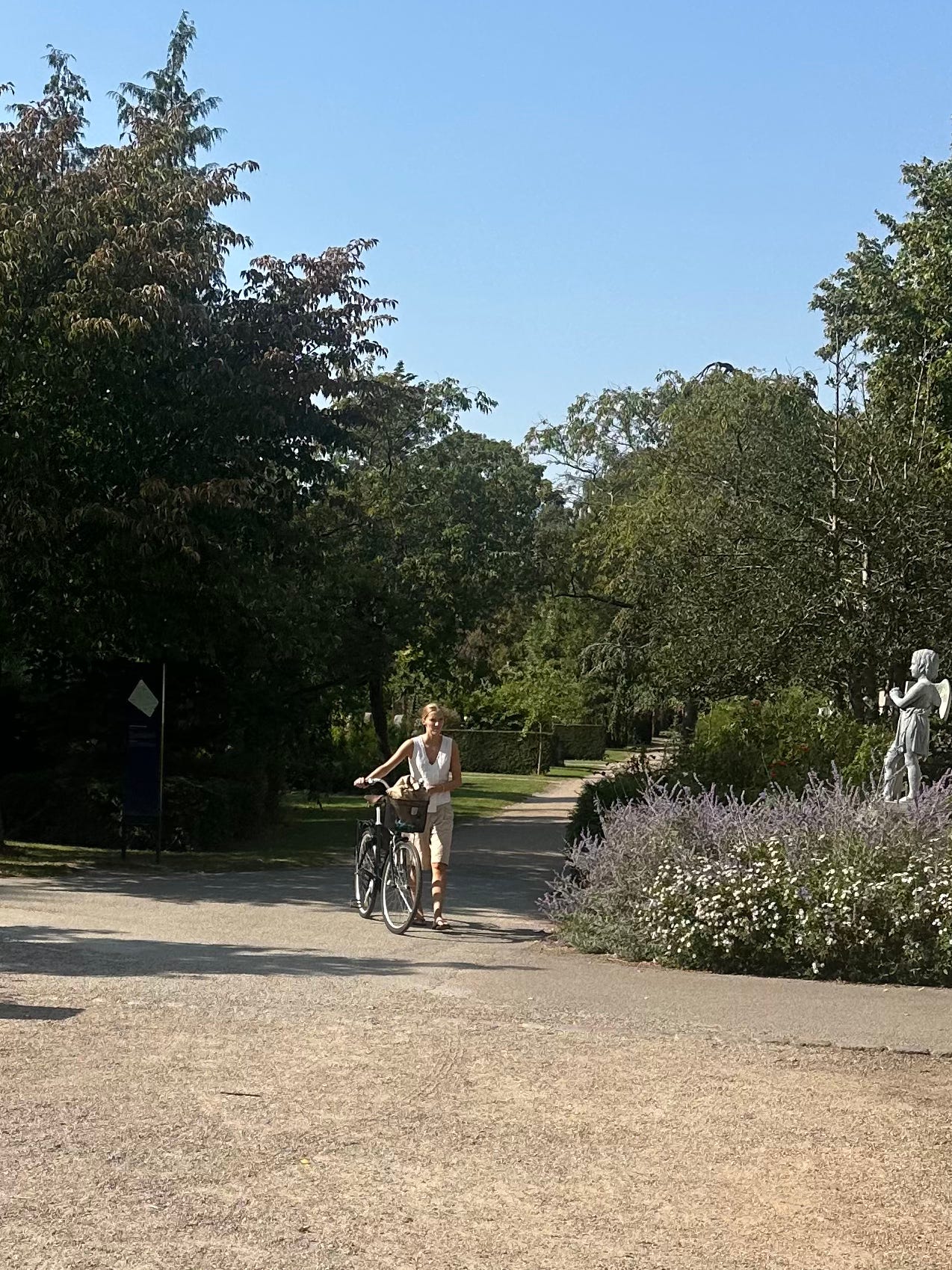
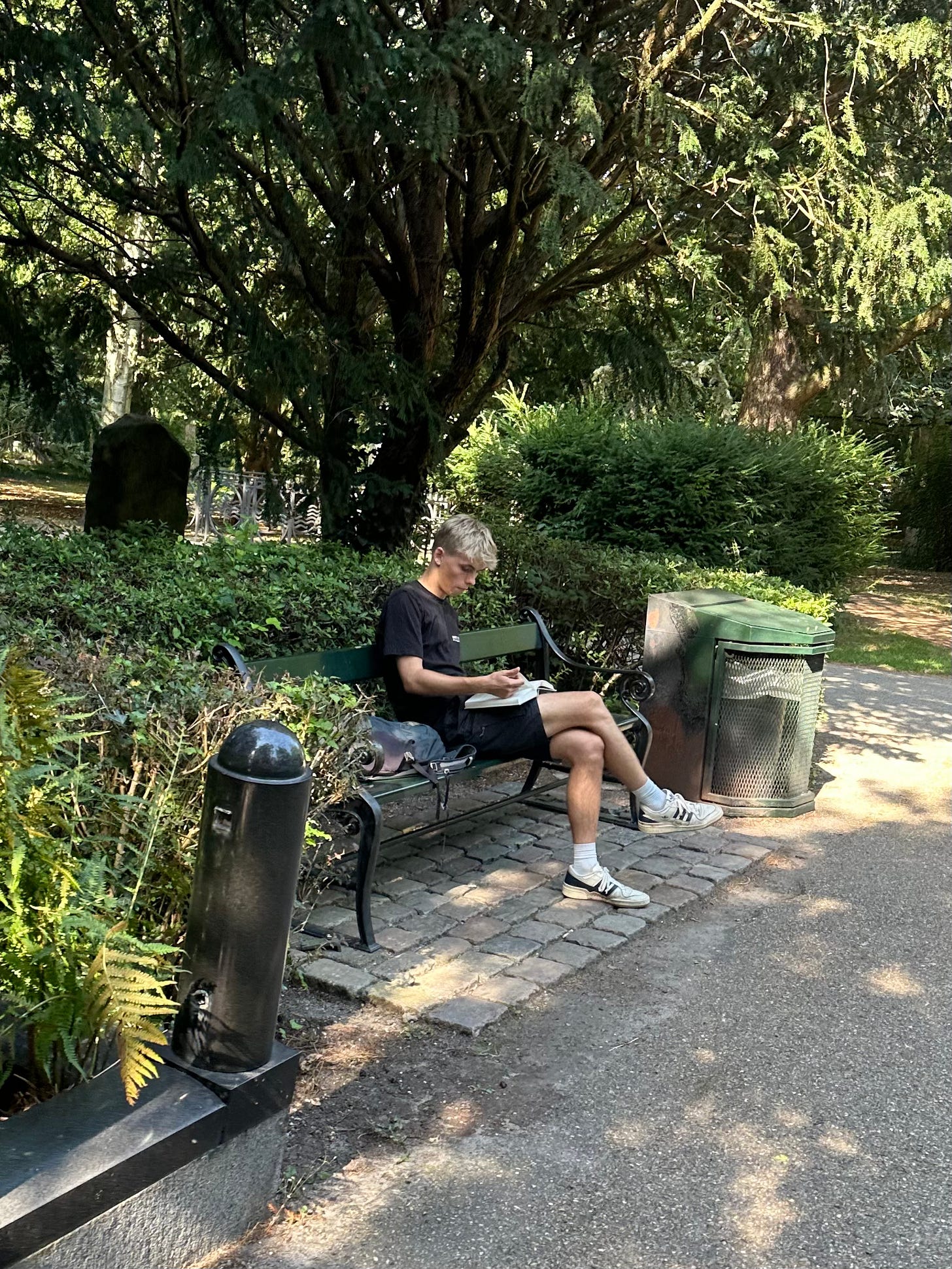
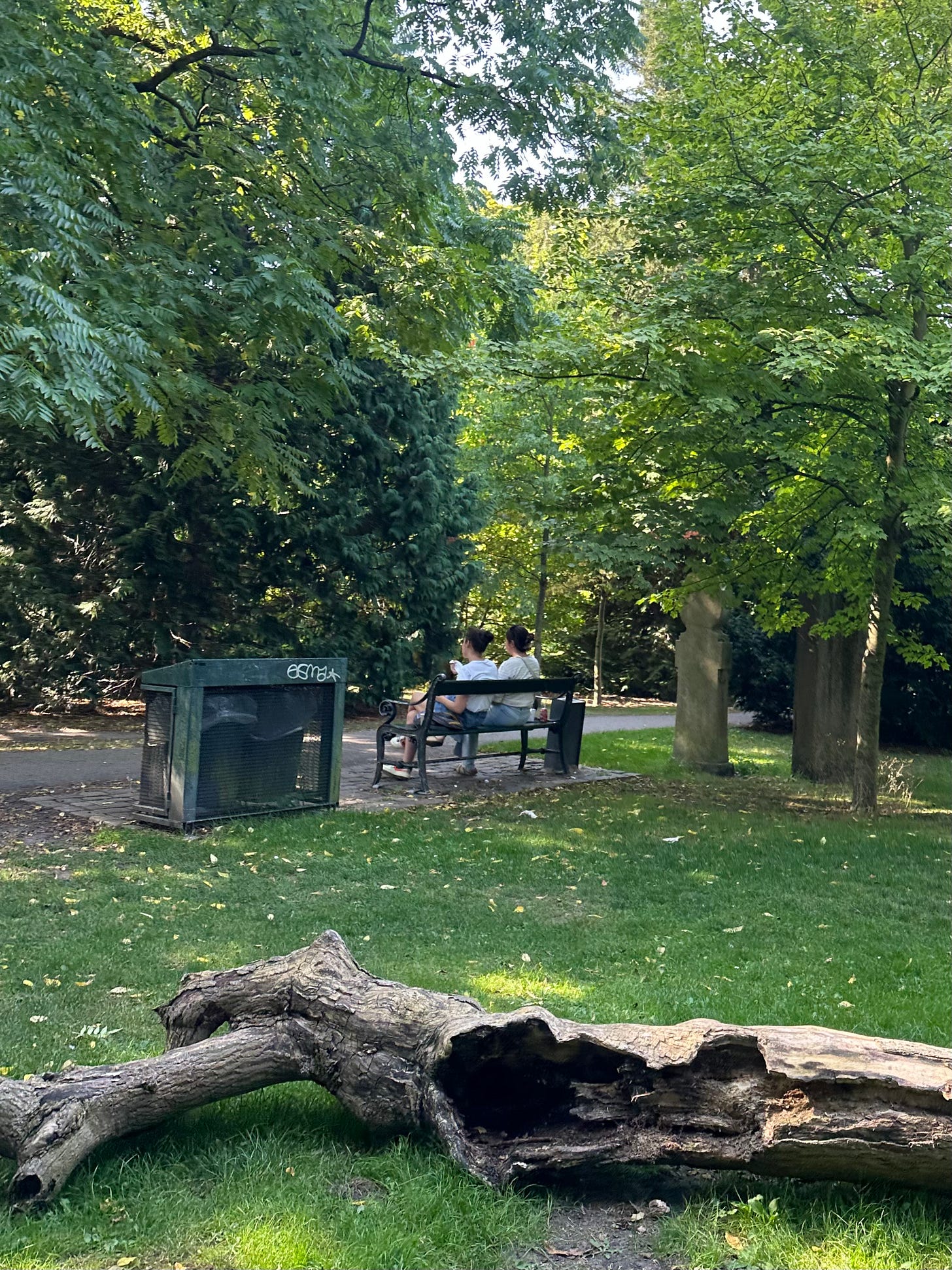

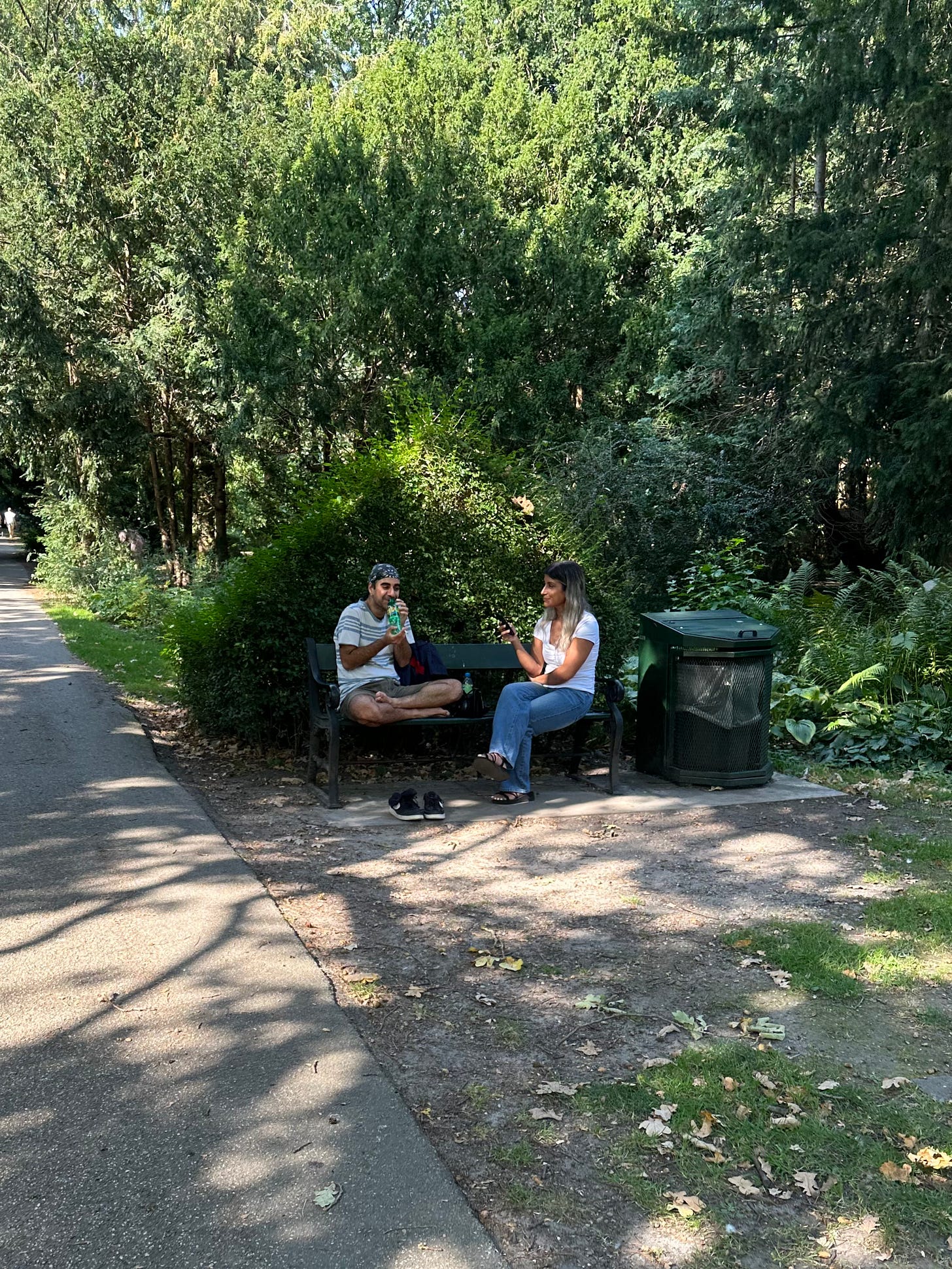
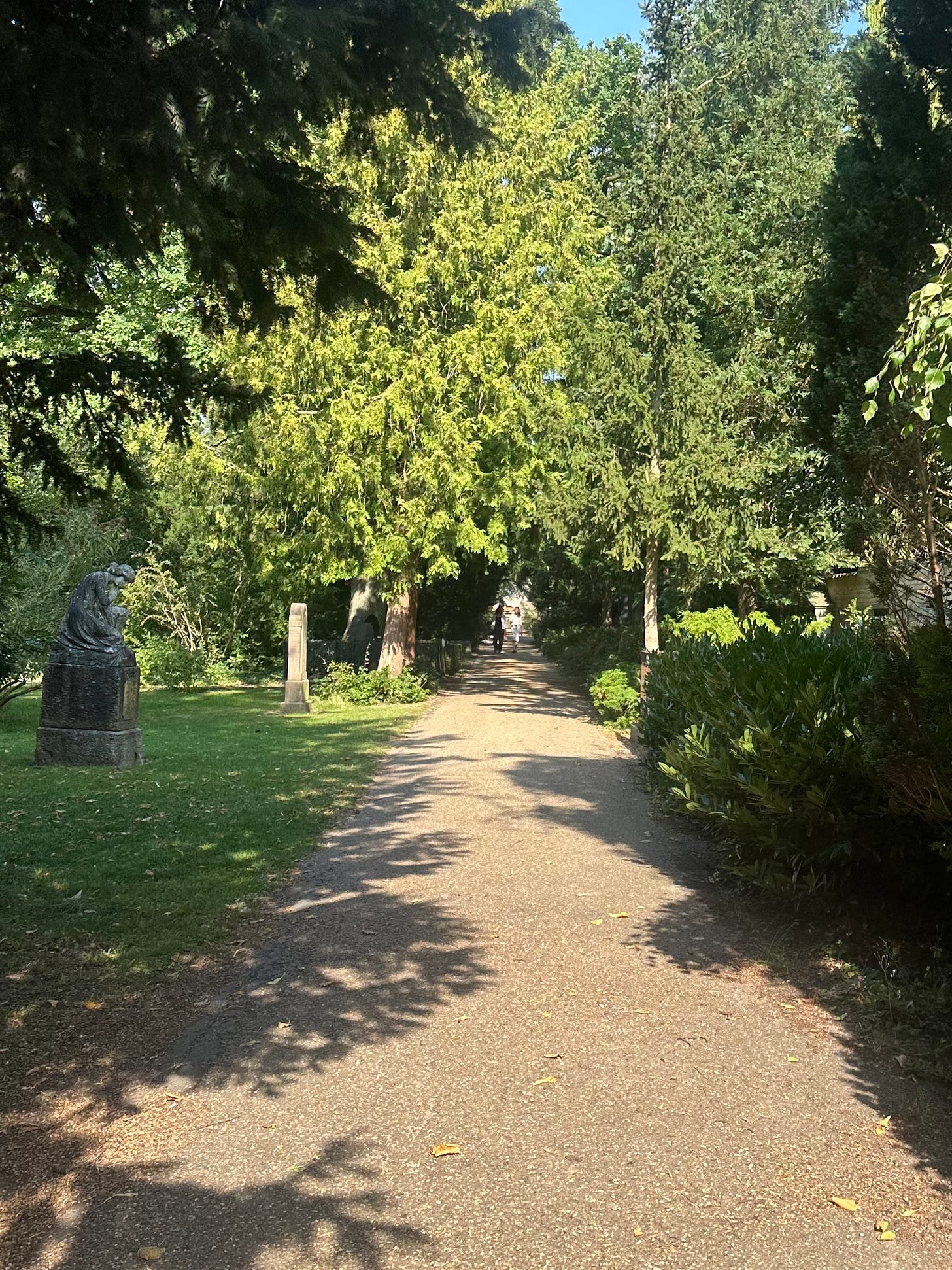
So much life experience being created! If anybody can adjust to the unfamiliar it’s you and Adam!
Love!!!! You’re so lucky to have alllll your grandparents. Give them a ring this week to remind them you love them in my honor!